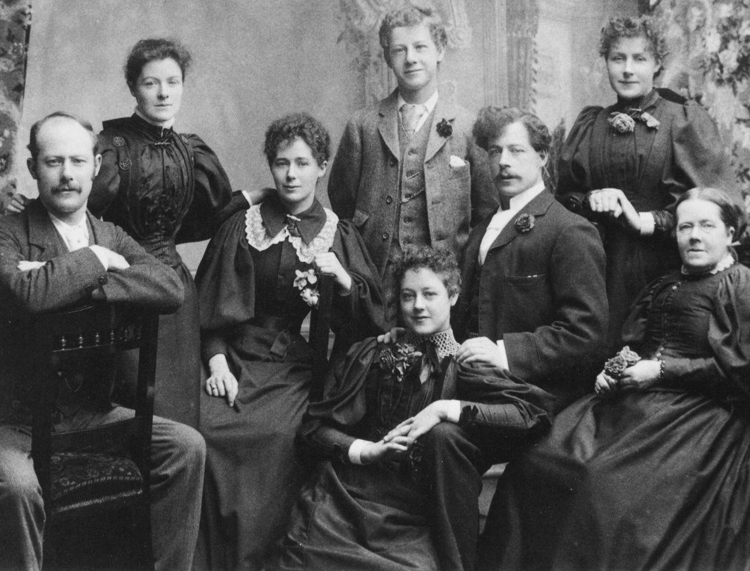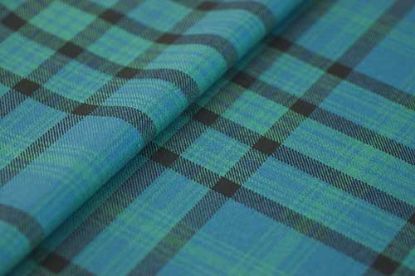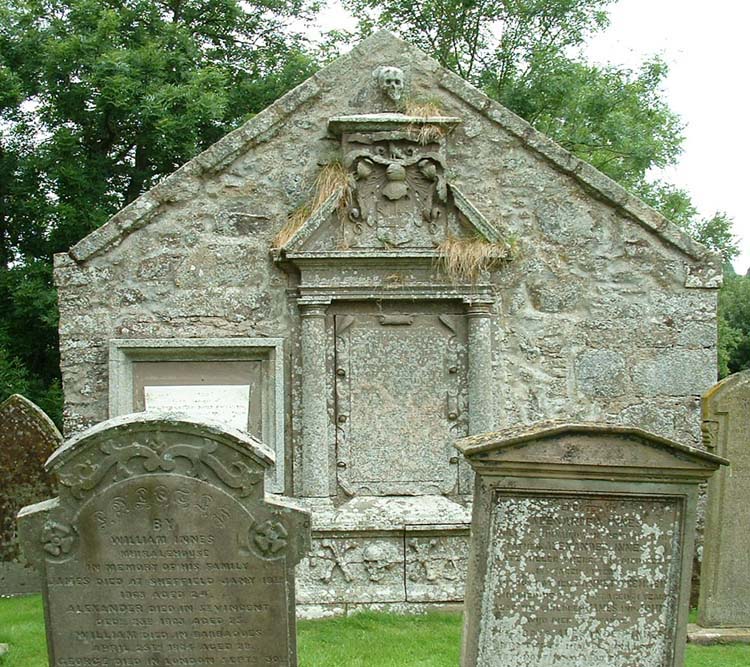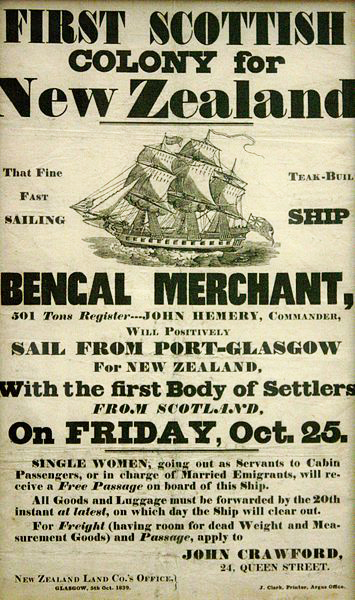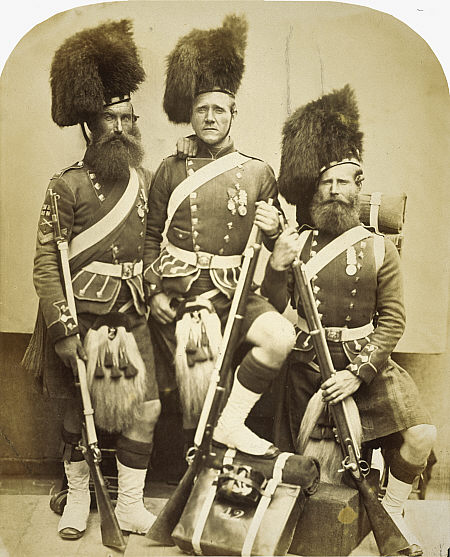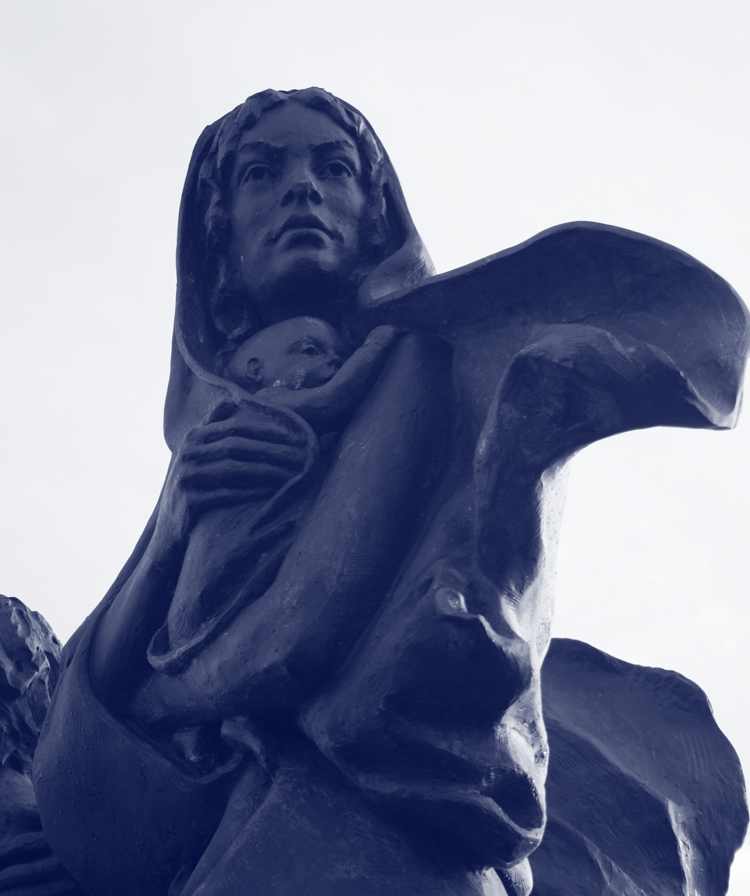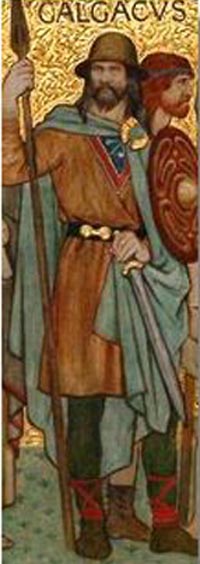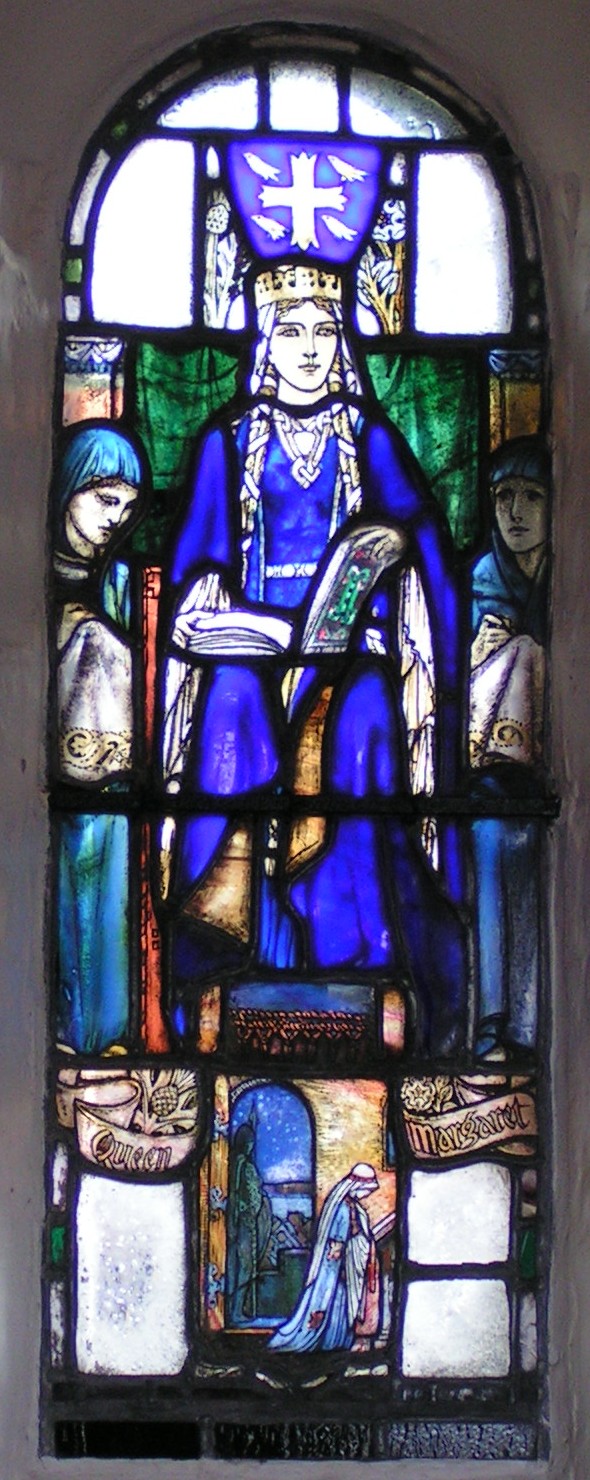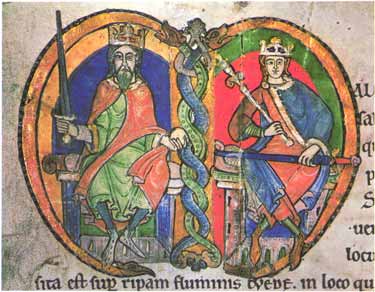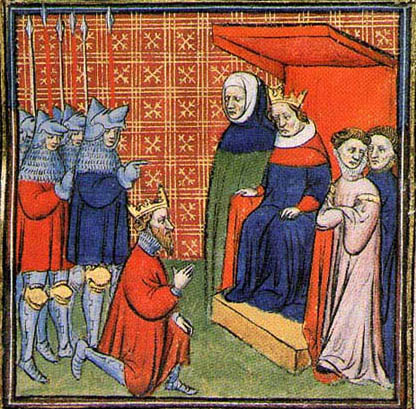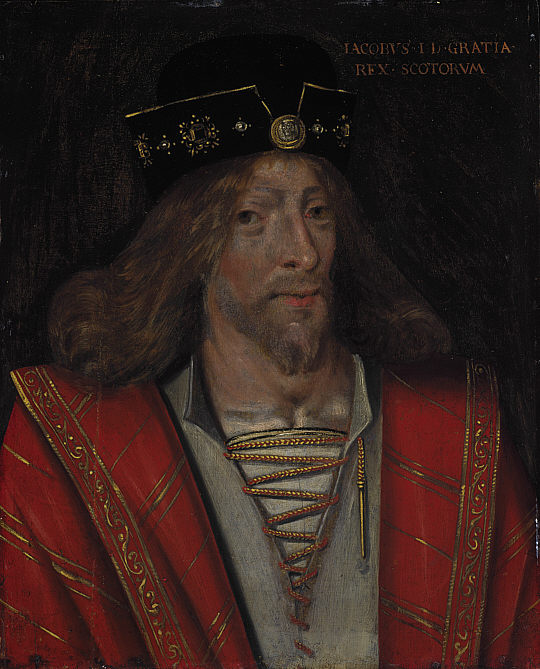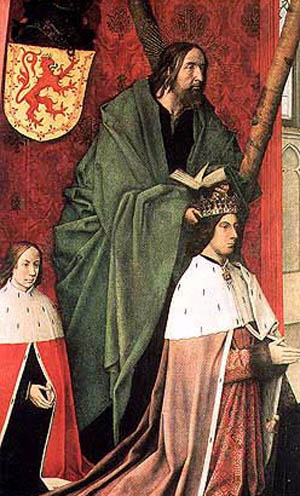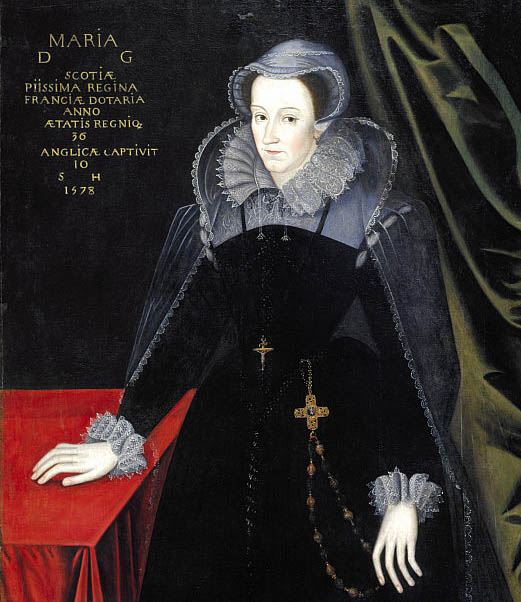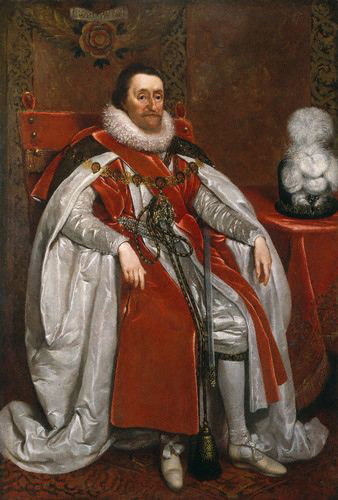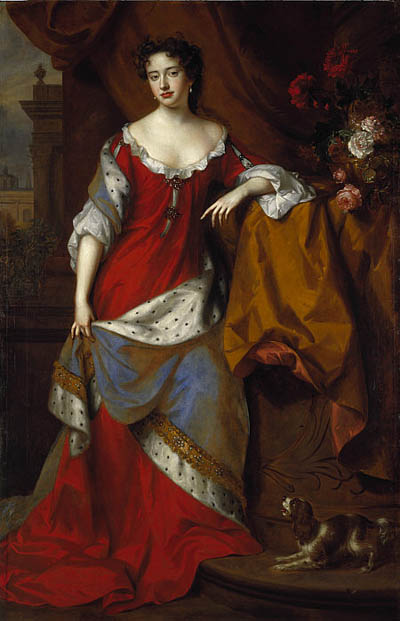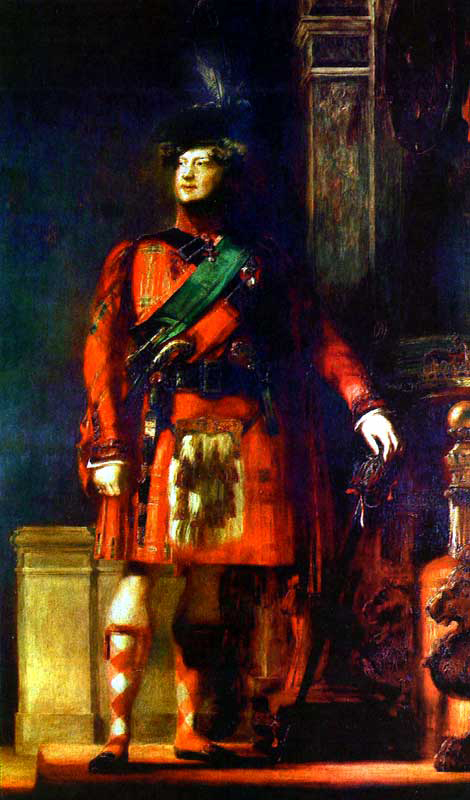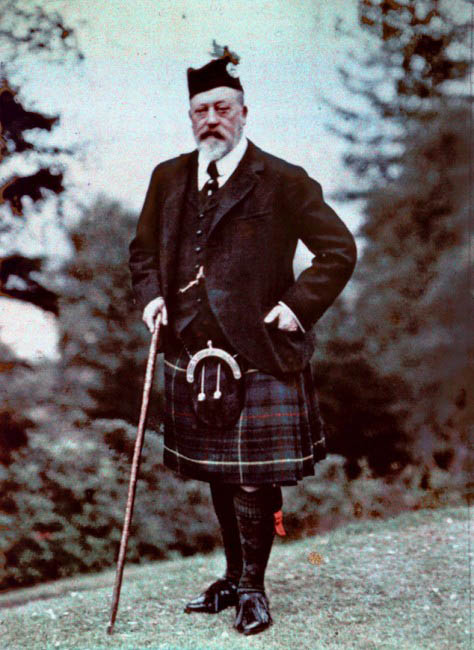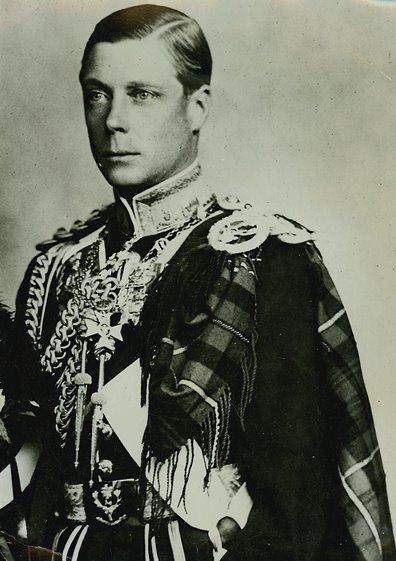Scottish Kings and Queens - Duncan I to Margaret Maid of Norway.
House of Dunkeld (1034-1286)
1034 –40 Duncan I
DUNCAN was the son of Malcolm II's daughter Bethoc and Crinan, Hereditary Abbot of Dunkeld, and succeeded his grandfather as King. The early years of his reign appear to have been peaceful, but in 1039 he led an army into England in retaliation against a Northumbrian attack on Strathclyde. He attacked the town of Durham, but was forced to retreat. The following summer, for reasons unknown, he marched into Moray, traditionally controlled by Macbeth, where he was killed in battle near Elgin, allegedly by his own men who were loyal to Macbeth.
1040-57 Macbeth
THE son of Finlay, Mormaer of Moray, and allegedly another daughter of Malcolm II, he married the Lady Gruoch, a granddaughter of Kenneth III, following the death of her first husband. When Duncan I invaded his territories of Moray, he conspired in his murder, and two years later, may have been instrumental in the killing of Duncan's father Crinan of Dunkeld. Contrary to the myths perpetuated by the English playwright William Shakespeare's version of the story, Macbeth ruled over Scotland for seventeen years and was confident enough to embark upon a pilgrimage to Rome in 1050. Four years later, however, Scotland was invaded by Siward, Earl of Northumbria, acting on behalf of the Saxon king, Edward the Confessor. Although Macbeth survived the ensuing battle, the Saxons nominated Duncan I's son Malcolm Canmore in his place. The fighting continued and Macbeth was killed by Malcolm three years later at the Battle of Lumphanan.
1057-58 Lulach “The Simple”
THE son of the Lady Gruoch by her first husband, Gille Coemgain, Mormaer of Moray, and through his mother a great grandson of Kenneth III, Lulach was briefly made king by his followers on his step-father's demise, but was shortly afterwards killed by Malcolm at Essie, near Rhynie, Strathbogie.
|
St Margaret, St. Margaret's Chapel, Edinburgh Castle. Douglas Strachan (1875-1950). Stained glass window 1922 |
1058-93 Malcolm III (Canmor or Ceann Mor, meaning “Big Head”)
EXILED to England following the overthrow of his father by Macbeth, Malcolm soon emerged as a formidable soldier. His first wife was Ingibjorg, daughter of Thorfinn Sigurdsson, Jarl of Orkney (although some historians believe that she was Thorfinn's widow and not his daughter). She and Malcolm had three sons, Duncan, Donald and Malcolm. After Ingibjorg’s death around 1069, the fugitive Margaret Atheling, a great-niece of the Saxon king, Edward the Confessor, and sister of Edgar Atheling, Saxon claimant to the English throne, arrived in Scotland. She and Malcolm married and they had eight children, four of whom in turn became Scottish kings. Their daughter Mathilda married Henry I of England. Margaret made a profound impact on Scotland's religion by introducing the Roman faith, and, in recognition of this, she was canonised by the Pope in 1249. In the course of his reign, Malcolm invaded England five times and in 1072, was forced by William the Conqueror to sign the Treaty of Abernethy. After William's death in 1087, Malcolm invaded England again. He was killed with his eldest son Edward at Alnwick in 1093. By Ingibjorg, he had three sons, and by Margaret, six.
1093-94 Duncan II
ELDEST son of Malcolm III and Saint Margaret, he was held hostage by William the Conqueror in 1072, but on his father's death his claim to the Scottish throne was supported by William II of England. He was killed in battle six months later and superseded by his uncle, Donald Bane.
1094-95 Donald III “Donald Bane”
THE younger son of the deposed Duncan I, he had gone into exile in the Western Isles for the duration of Macbeth's reign. On the death of his brother Malcolm III, he returned to the mainland to oppose his nephew, Duncan II, briefly becoming king until overthrown, imprisoned and blinded by another nephew, Edgar.
1095 –97 Edmund
THE second son of Malcolm III and Saint Margaret, he appears to have been willing to share the kingdom with his treacherous uncle Donald Bane, whom he succeeded. On the intercession of his brothers and maternal uncle, however, he retired into Holy Orders to to become a monk in Somerset, England.
1097-1107 Edgar
FOURTH son of Malcolm III and Saint Margaret, Edgar supported his half-brother Duncan II, and, on his death invaded Scotland with the support of the English king, William Rufus, taking possession of Lothian. The year after he ascended the Scottish throne, he signed a treaty with Magnus Barefoot, King of Norway, in regard to Norse claims in the Hebrides. Like all of his brothers, he was deeply religious and endowed churches in St Andrews, Coldingham, Dumfries and Durham. He died in Edinburgh and was buried at Dunfermline Abbey.
1107-24 Alexander I - “The Fierce”
FIFTH son of Malcolm III and Saint Margaret, Alexander founded Augustinian religious houses at Scone and on Inchcolm Island, in the Firth of Forth, and prohibited the acknowledgement of English supremacy by bishops of St Andrews. He married Sybilla, a natural daughter of Henry I of England, who was his sister's husband, but they had no children.
|
David I and Malcolm IV, from the Kelso Abbey Charter, illuminated initial, 1159 |
1124-53 David I
THE youngest son of Malcolm III and Saint Margaret, David was born in 1084, brought up in England at the Court of his brother-in-law, Henry I, and married Maud, daughter of Waltheof, Earl of Northumbria. During the reign of his brother Alexander I, he controlled southern Scotland as “Earl”, and, on inheriting the Scottish throne, did much to reorganise his realm along Norman principles. To this end, he encouraged the foundation of religious houses and invited many of the Anglo-Norman friends he had made in England to Scotland, offering them land in return for their services.
King David's son and heir Henry, Earl of Huntingdon, pre-deceased him in 1152. Earl Henry had married Ada de Warenne, a relative of William the Conqueror, and their sons Malcolm and William would both succeed as kings of Scotland. One daughter married Florent III of Holland; another, Conan IV, Duke of Brittany, then Humphrey de Bohun, Earl of Hereford and Hereditary Constable of England, and Princess Marjorie, the third surviving daughter, married Gillechrist, Earl of Angus.
David's support of his niece Mathilda against her cousin Stephen, Count of Bulogne (both Mathilda and Stephen were grandchildren of William the Conqueror) ended with Mathilda's defeat at the Battle of the Standard in 1138. The enmity continued with David joining Mathilda in London in 1151 to accompany her to Winchester. In failing health, he died at Carlisle.
1153-65 Malcolm IV - The Maiden
GRANDSON of David I, Malcolm succeeded his grandfather at the age of twelve and soon found himself having to confront the anti-Norman factions of his kingdom. Among these was Somerled, ancestor of the Clan Donald and acknowledged by the Gales as “King of the Hebrides”. Providentially, he soon became preoccupied with a war against the King of Man. Malcolm meanwhile ceded several of his English land holdings to his cousin Henry II of England, and fought alongside him in France. Returning to Scotland, he suppressed an uprising in Galloway, and when Somerled laid siege to Glasgow in 1164, the islesmen were repelled and Somerled and his son killed. Deeply religious, Malcolm founded a Cistercian Abbey in Coupar Angus.
1165-1214 William I - The Lion
THE second son of Henry, Earl of Huntingdon by Ada de Warenne, William “The Lion” invaded England in 1174, and was taken prisoner at Alnwick, whereupon he was forced to sign The Treaty of Falaise, which acknowledged his cousin Henry II as his feudal overlord. This agreement was overturned in 1189 with the Quitclaim of Canterbury, in which Henry's successor Richard I of England negated the obligation in return for a payment of 10,000 merks (a Scottish silver coin worth one twelfth of its sterling equivalent). During his reign, William suppressed rebellions in Galloway and Ross, and consolidated his rule north to the Pentland Firth. He married Ermengarde de Beaumont and they had two sons and three daughters: Princess Margaret, who married Hubert de Burgh, Earl of Kent; Princess Matilda, who married the fourth Earl of Norfolk, and Princess Marjorie, who married the fourth Earl of Pembroke. It was through his second son, who inherited the earldom of Huntingdon, that all future kings of Scotland after the death of the Maid of Norway are descended.
1214-49 Alexander II
SON of William I, and born in Haddington, Alexander suppressed rebellions in Moray, Argyll, Caithness and Galloway, and began to counter-attack the Viking incursions into the Western Isles. In 1215, he gave his support to the English barons in their confrontation with King John, which led to the signing of the Magna Carta. He renounced his claim to Northumberland and to consolidate his friendly relationship with Henry III, King John's successor, married Henry’s sister, Princess Joan. Following her death, he married Marie de Courcy, daughter of a Picard lord and by whom he had his only son. He died on the island of Kerrera, off Oban in Argyll.
1249-86 Alexander III
THE only son of Alexander II, he had fourteen years into his reign to contend with a formidable invasion from King Haakon of Norway, who fortuitously withdrew after the indecisive conclusion of the Battle of Largs. The situation was resolved after Haakon's death in 1263 and the Hebrides was ceded to the Scottish Crown at the Treaty of Perth in return for a monetary payment. Although Alexander maintained close ties with England, he firmly avoided paying homage to the English king. His first wife was Princess Margaret of England, daughter of Henry III; his second wife, Yolande, daughter of the Comte de Dreux. In his excitement to return to her at his castle at Kinghorn in Fife, he crossed the Firth of Forth in a storm and fell from his horse on the cliffs near to his destination, where he died. Tragically, his three children by Queen Joan had pre-deceased him, leaving only his granddaughter Margaret as his direct heir.
1286-90 Margaret - The Maid of Norway
WITH the tragic, unexpected death of her grandfather, Princess Margaret of Norway (daughter of Princess Margaret of Scotland and King Erik of Norway) was named heir to the Scottish throne, and betrothed to the six-year old Prince Edward of England. She was seven years old when she was despatched by boat to claim her realm under the regency of six Scottish nobles but mysteriously died off the coast of Orkney. Her demise threw the succession to the Scottish throne into chaos, and her uncle, Edward I of England, promptly pronounced himself Overlord of Scotland. There then began a process to select a replacement monarch in which thirteen candidates came forward – Florent V, Count of Holland; Patrick of Dunbar, Earl of March; William de Vesey, William de Ros, Robert de Pinkeney, Nicholas de Soules, Roger de Mandeville, Patrick Golightly, John Hastings, John Balliol, John Comyn of Badenoch, Robert de Brus, and, as father of Queen Mary, King Eric of Norway himself. After lengthy negotiations, John Bailliol was chosen by Edward and enthroned at Scone on 30th November, 1292.
